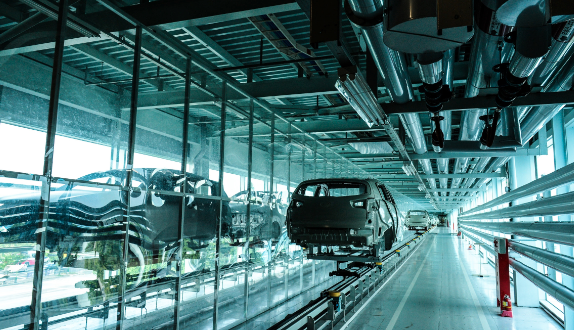Kia Motors Corporation is already counting the gains of adopting environmental-friendly technologies in its production processes. On Thursday, the Korean car maker said it has made significant progress in reducing the environmental impact of its production facilities.This was disclosed in the company’s annual ‘MOVE’ sustainability report released in Seoul.
According to the report, the Korean car manufacturer’s ongoing efforts to introduce more environmentally sustainable production methods have, over the past 12 months, resulted in lower greenhouse gas emissions levels, less waste and reduced water use across its domestic production sites. These, it said, have been achieved with a strong focus on recycling, employee sustainability initiatives, reducing unit waste and cleaner, more modern production methods.
The report said Kia’s domestic plants, located in Sohari, Gwangju and Hwasung, Korea, accounted for 56.5% of all Kia global production in 2015 – 1.72 million units. It added that while the company’s year-on-year global sales grew by 0.3% in 2015, to 3.05 million units, the ongoing focus on sustainability across the brand’s manufacturing facilities has minimized the environmental impact of this growth.
Lower consumption of raw materials, less waste, more recycling
Kia’s focus on improving production methods has resulted in a 12.4% per-unit reduction in the volume of raw materials required since 2014 and a 21.5% reduction since 2003. This includes a 22.1% drop in the amount of steel needed to produce each individual car, as well as an 11.7% drop in the consumption of paint throughout the same period since 2003.
As a result of this push for greater efficiency, Kia said it has recorded a 1.2% reduction in per-unit waste output since 2014 – and a 30% decrease since 2003. In 2015, the three domestic production sites generated a total of 233,442 tons of waste, down 0.2% from the previous year despite the growth in production. Meanwhile, recycling rates have risen, with the company finding alternative uses for 93.7% (219,000 tons) of all waste materials. For instance, unused zinc-coated steel is sent to steelmakers in Korea, while uncoated steel can be recycled for use at the foundry in Kia’s Gwangju facility. Kia has also introduced programs to recycle and re-use paint and thinners, while other waste is being used to make cement for construction, as well as other materials.
Waste materials that can’t be reused or recycled are incinerated or buried, with landfill waste totaling near 1% of all factory waste. The Sohari manufacturing facility, with a production capacity of 340,000 cars per year, has generated 0% landfill waste since 2008.
Drop in water consumption
2015 saw further reductions in the use of water throughout Kia’s domestic plants. A finite resource, the manufacturer has introduced a range of measures to conserve water, including employee water conservation campaigns and stemming cooling water overflow to improve water recovery rates from condensed steam produced during car manufacture.
Despite a growth in production across all three production facilities, Kia’s water use decreased by 5.5% in total volume in 2015, from 6.3 million m3 to 5.957 million m3, and by 6.5% per unit. Per-unit consumption of water is now down 38.5% since 2003.
Lower per-unit production emissions
The latest figures from Kia show that carbon dioxide emissions resulting directly from the production process have also fallen. Kia became the first Korean company to undertake third-party evaluation of greenhouse gas emissions from its service and production facilities, with emissions levels monitored by the Korea Energy Management Corporation. In 2015, per-unit emissions of CO2 generated during production fell 2.8% year-on-year, and have reduced by 29.6% since 2008. Kia’s total decrease in production CO2 emissions are equivalent to the annual carbon intake of 48 million pine trees.
At the same time, the level of harmful air pollutants generated per vehicle during the manufacturing process – including paint particles, volatile organic compounds (VOCs), dust particles and combustion gases – have also decreased. VOC levels are now 54.2% lower than in 2005, while air pollutant emissions were slashed by 5% from 2014 to 2015, and are now 53% lower than in 2003.
New environmentally-friendly technologies in Mexico manufacturing plant
Kia has recently started production at its new manufacturing facility, in Monterrey in the state of Nuevo León, Mexico – and the plant features the latest manufacturing processes to minimize its environmental footprint. Among the innovations installed at the Nuevo León facility is a new paint-shop with a regenerative thermal oxidizer system, through which volatile organic compounds from the vehicle painting process are channeled. The system purifies the air before releasing it into the atmosphere, pollutant-free.
Other features of the plant including full LED lighting throughout the factory, construction materials to maximize the facility’s thermal efficiency, and a water treatment plant to purify and recycle water.
Kia Motors said it is committed to pursuing effective innovations and improvements to production processes at every one of its global production facilities, in order to further reduce its impact on the environment. The company’s efforts in this regard, along with the development of alternative powertrains and the use of recyclable, eco-friendly materials in its vehicles, have been recognized by Interbrand, the world’s leading brand consultancy. Interbrand included Kia in 35th place in its most recent Best Global Green Brands report.
 ..:: AUTO REPORT AFRICA ::..
..:: AUTO REPORT AFRICA ::..




